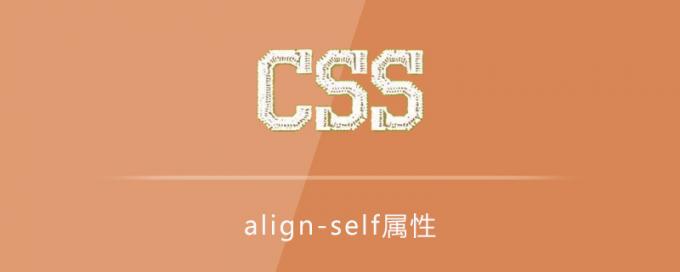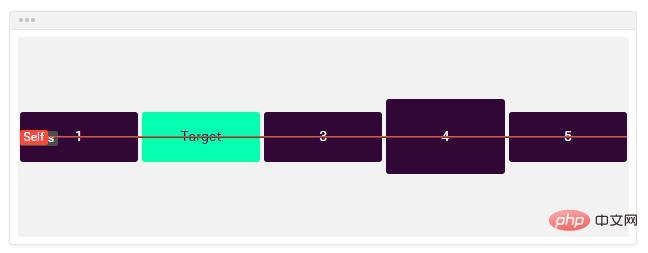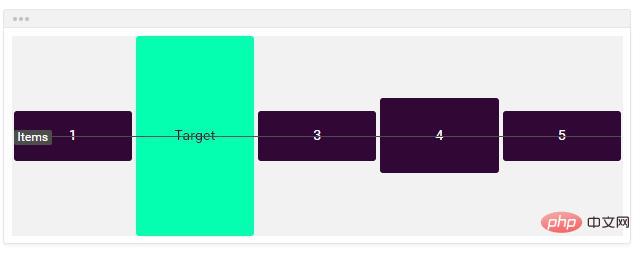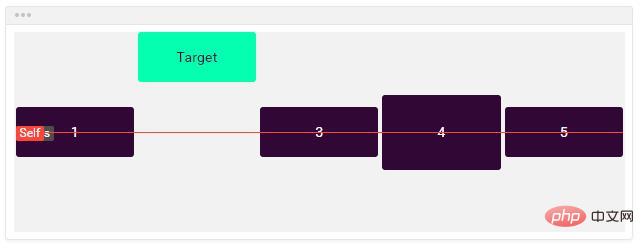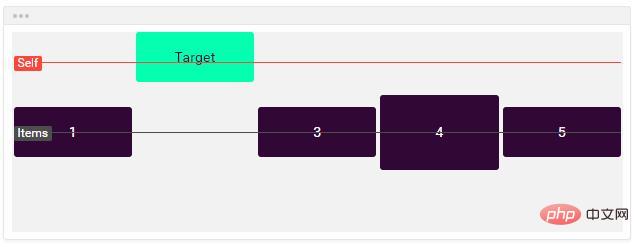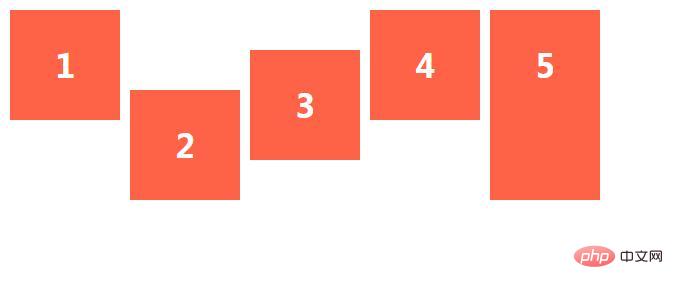|
css align-self属性用于定义flex子项单独在侧轴(纵轴)方向上的对齐方式:拉伸以适应容器、位于容器的中心、位于容器的开头、位于容器的结尾、位于容器的基线上。
css align-self属性 align-self属性是Flexible Box Layout模块的子属性。 作用:定义flex子项单独在侧轴(纵轴)方向上的对齐方式。 注意:align-self 属性可重写灵活容器的 align-items 属性。 语法 align-self: auto|stretch|center|flex-start|flex-end|baseline|initial|inherit; 属性值: auto:默认值。元素继承了它的父容器的 align-items 属性。如果没有父容器则为 "stretch"。
stretch:元素被拉伸以适应容器。如果指定侧轴大小的属性值为'auto',则其值会使项目的边距盒的尺寸尽可能接近所在行的尺寸,但同时会遵照'min/max-width/height'属性的限制。
center:元素位于容器的中心。弹性盒子元素在该行的侧轴(纵轴)上居中放置。(如果该行的尺寸小于弹性盒子元素的尺寸,则会向两个方向溢出相同的长度)。
flex-start:元素位于容器的开头。弹性盒子元素的侧轴(纵轴)起始位置的边界紧靠住该行的侧轴起始边界。
flex-end:元素位于容器的结尾。弹性盒子元素的侧轴(纵轴)起始位置的边界紧靠住该行的侧轴结束边界。
baseline:元素位于容器的基线上。如弹性盒子元素的行内轴与侧轴为同一条,则该值与'flex-start'等效。其它情况下,该值将参与基线对齐。
css align-self属性使用示例
<!DOCTYPE html>
<html>
<head>
<meta charset="UTF-8">
<style>
.flex-container {
padding: 0;
margin: 0;
list-style: none;
height: 200px;
display: flex;
}
.flex-start {
align-self: flex-start;
}
.flex-end {
align-self: flex-end;
}
.center {
align-self: center;
}
.baseline {
align-self: baseline;
}
.stretch {
align-self: stretch;
}
.flex-item {
background: tomato;
padding: 5px;
width: 100px;
margin: 5px;
line-height: 100px;
color: white;
font-weight: bold;
font-size: 2em;
text-align: center;
}
</style>
</head>
<body>
<div class="box">
<ul class="flex-container">
<li class="flex-item flex-start">1</li>
<li class="flex-item flex-end">2</li>
<li class="flex-item center">3</li>
<li class="flex-item baseline">4</li>
<li class="flex-item stretch">5</li>
</ul>
</div>
</body>
</html>
效果图:
|

